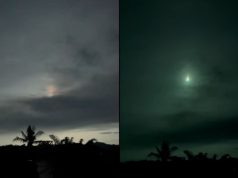LOS ANGELES, CALIFORNIA — A technique called digital holographic microscopy, which uses lasers to record 3-D images, may help scientists spot extraterrestrial microbes, according to a NASA’s new research.
“It’s harder to distinguish between a microbe and a speck of dust than you’d think,”said Jay Nadeau, research professor of medical engineering and aerospace in Caltech’s Division of Engineering and Applied Science, in a recent statement.
“You have to differentiate between Brownian motion, which is the random motion of matter, and the intentional, self-directed motion of a living organism,” Jay Nadeau said.
Whereas standard microscopes can only view a thin slice of a drop of water, the new detection method, detailed in the journal Astrobiology, adds more.
The journal is recently publishing a special issue dedicated to the search for signs of life on Saturn’s icy moon Enceladus.
Included is the new paper, co-authored by Chris Lindensmith of NASA’s Jet Propulsion Laboratory and scientists from Caltech.
Enceladus, the sixth-largest moon of Saturn, has a lot of water-an ocean’s worth, hidden beneath an icy shell that coats the entire surface. When the Saturn probe Cassini flew by Enceladus in 2005, it spotted water vapor plumes in the south polar region blasting icy particles at nearly 2,000 kilometers per hour to an altitude of nearly 500 kilometers above the surface.
Even if life does exist there in some microbial fashion, the difficulty for scientists on Earth is identifying those microbes from 790 million miles away.
To identify the motion of potential microbes from Enceladus’s plumes, scientists propose using digital holographic microscope, in which an object is illuminated with a laser and the light that bounces off the object and back to a detector is measured, according to the study.
With holographic microscopy, scientists were able to identify organisms with population densities of just 1,000 cells per milliliter of volume, similar to what exists in some of the most extreme environments on Earth, such as subglacial lakes.
“Digital holographic microscopy allows you to see and track even the tiniest of motions,” Nadeau says.
Next, the team will attempt to replicate their results using samples from other microbe-poor regions on Earth, such as Antarctica, according to a press release.










